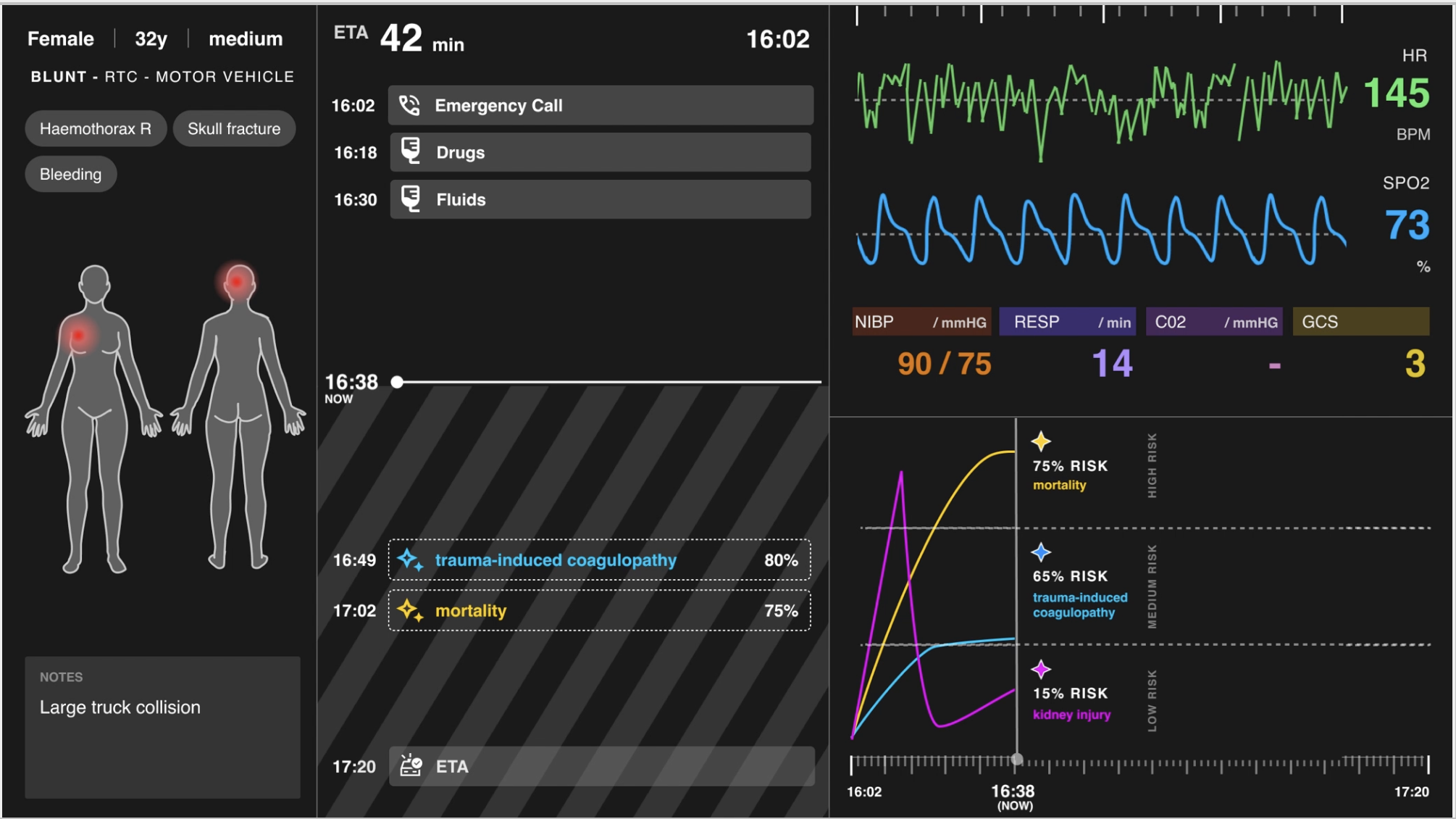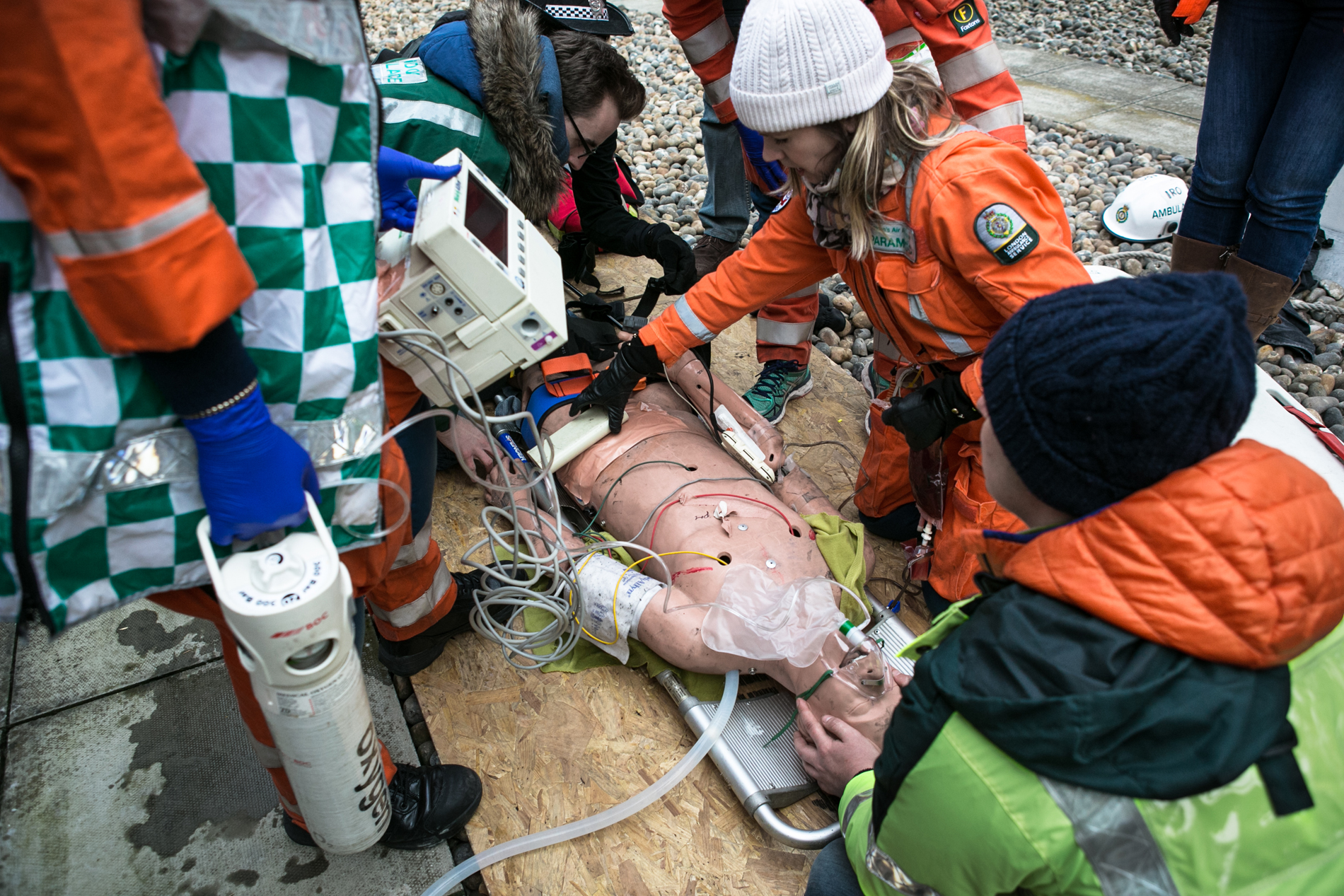
A collaboration for innovation in emergency medicine.
We bring together specialists in pre-hospital care and designers, to look at ways to better design the way we care for people in emergency situations. We look at the way we train future doctors, workflow, stress management and procedures. How can we improve the whole system, to save more people’s lives?
Julia Constantinidou: Blood Auto-Transfusion Kit
A kit that converts an LSU suction unit, used to suck and dispose of unwanted bodily fluids form the patient, to auto transfuse blood. The unit can now collect, filter and redistribute the patients blood back to their body.
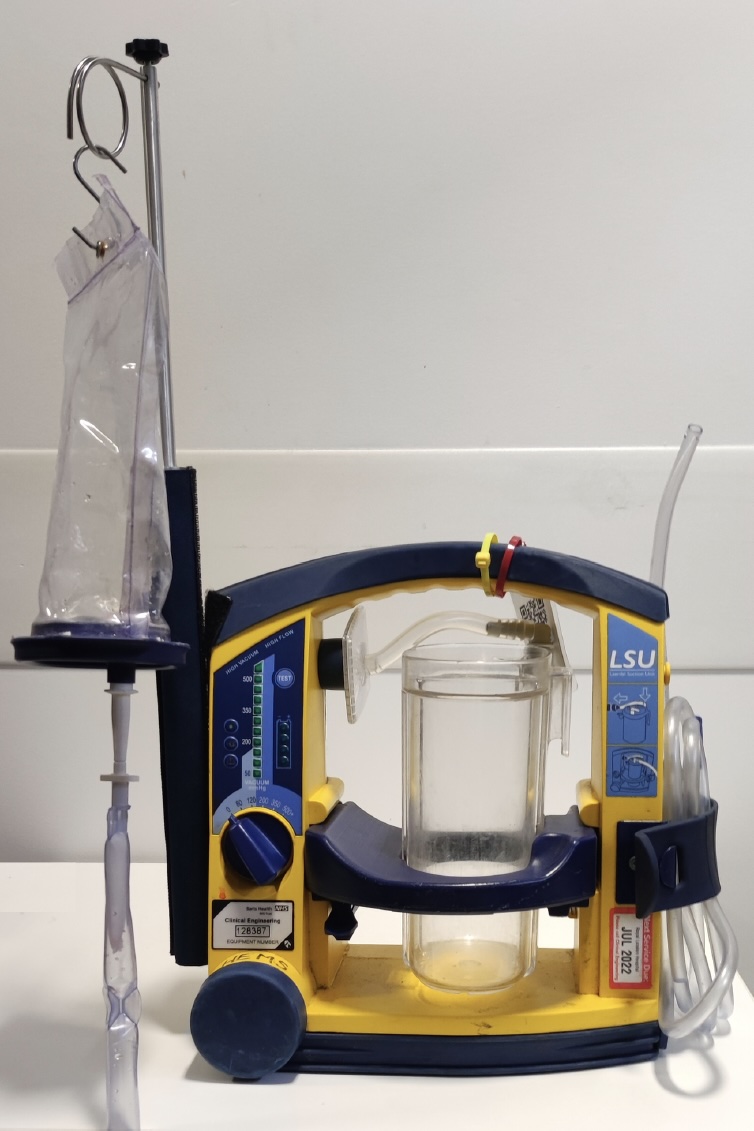
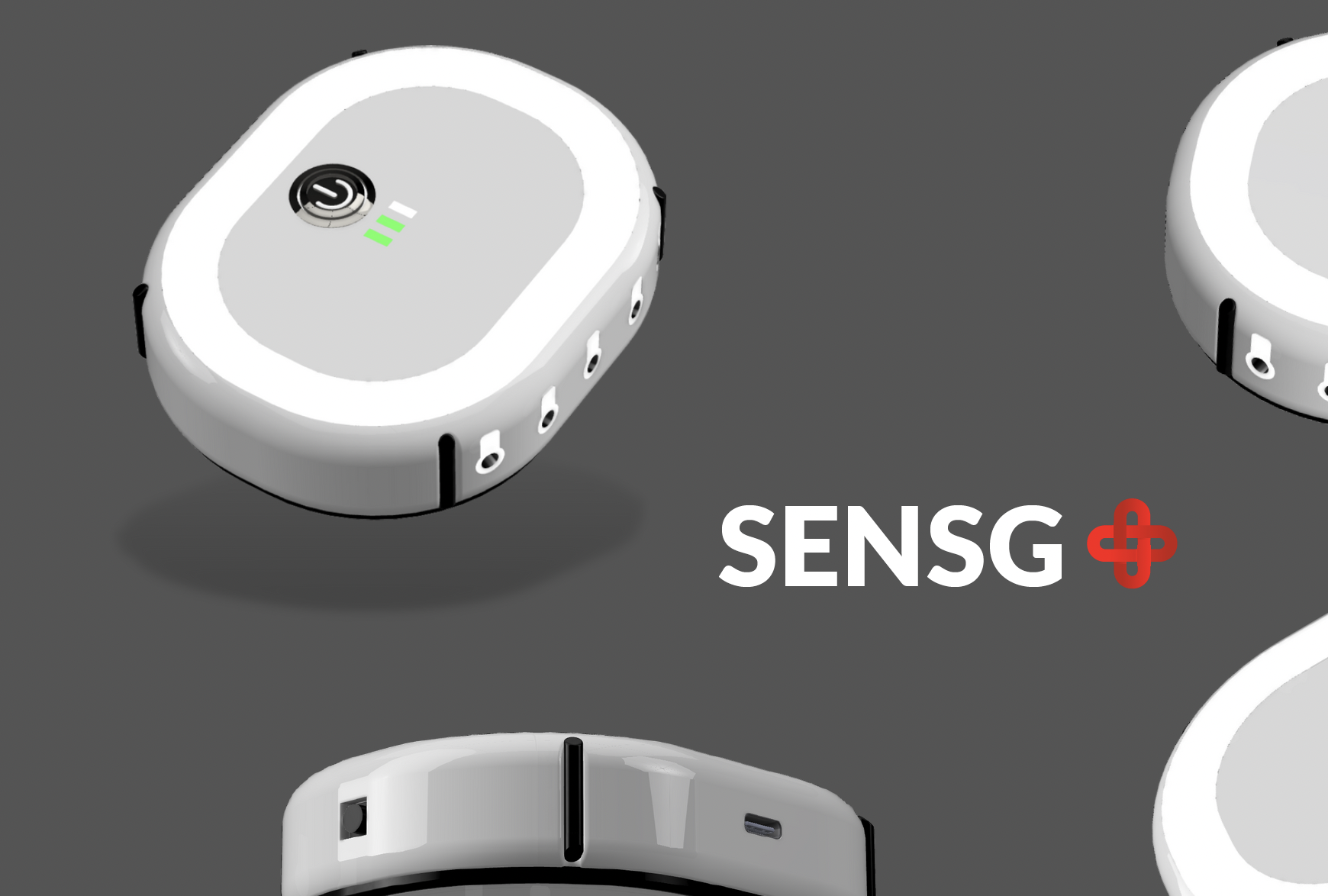
Lucia Moreno Gimeno SensGo – Less Wires, More Health
SENSGO is a revolutionary wireless patient monitoring device designed to replace traditional wired monitors in medical settings. This compact and lightweight smart device addresses common issues with current monitoring systems, such as wire complexity, weight, and space constraints. SENSGO weighs 30 times less and occupies 10 times less space than conventional monitors, while featuring an ergonomic design with impact protection and a light feedback system. It incorporates various sensors to measure vital signs like ECG, SpO2, and temperature, wirelessly connecting to an iPad for real-time data display. By eliminating multiple wires, SENSGO aims to streamline patient monitoring, save time, reduce complications, and ultimately improve patient care in medical environments.
Charlie Marchal Hanns: Aortic Dissection Diagnosis Community Platform
This project aims to develop a user-friendly, community-driven application for healthcare professionals to discuss and analyse complex aortic dissection cases. The platform will enable medical practitioners to share experiences, review challenging diagnoses, and learn from missed cases, creating a collective knowledge base. By fostering collaboration and knowledge sharing, this app seeks to enhance the accuracy and efficiency of aortic dissection diagnoses, ultimately contributing to improved patient outcomes in cardiovascular health.
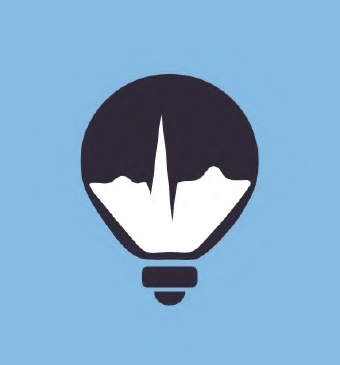
Alok Mehta: IEEE Paper
This study developed a soft-technology system for Resuscitative Endovascular Balloon Occlusion of the Aorta (REBOA), functioning as both a diameter sensor and flow modulator. Using internal balloon pressure as a surrogate marker for aortic lumen diameter, a neural network was trained to accurately predict diameters. Flow modulation was achieved using a tendon-deformable balloon, which prevented distal migration. The system demonstrated high accuracy in diameter prediction and successful flow control. This portable soft robotic system shows significant potential for integration into current catheters with minimal modifications, marking an important advancement in haemorrhage control technology.
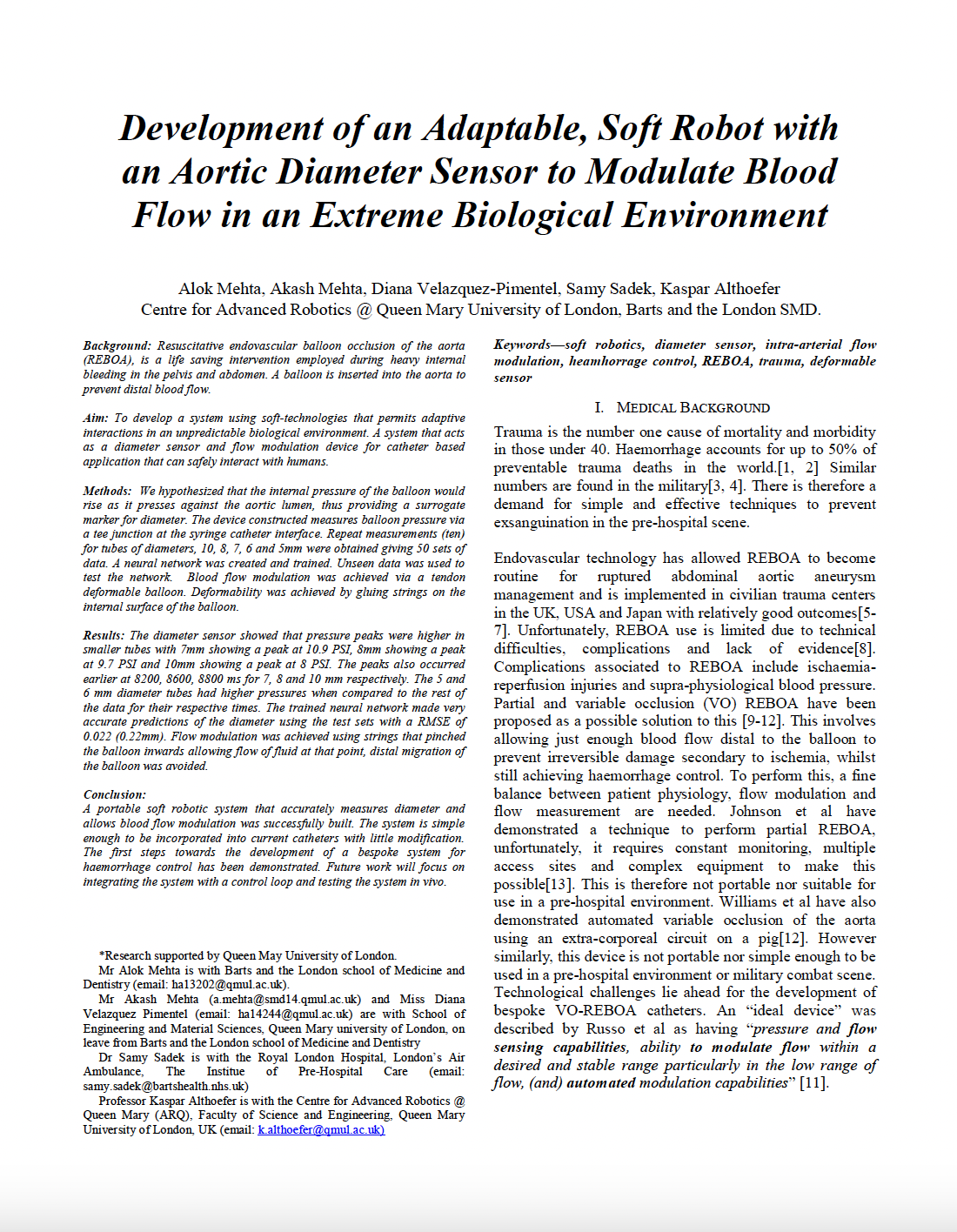

MFA student: Susanne Duswald
Around 4.8 Million people die because of their trauma injuries each year and over 35% never reach the hospital in time because they bleed to death at the scene. What can doctors do to stop the bleeding on site?
There is a method from the 1950s, called “Resuscitative Endovascular Balloon Occlusion of the Aorta”, where the doctor inserts a balloon catheter into the femoral artery (inside the leg) of the patient and clogs the aorta with the inflated balloon. This method is very effective and can save many lives, but it’s very difficult to use in the unpredictable pre-hospital environment. Only a handful of emergency professionals worldwide feel confident enough to use this method.
Can we reduce the complexity of the REBOA kit to make it a more effective procedure?
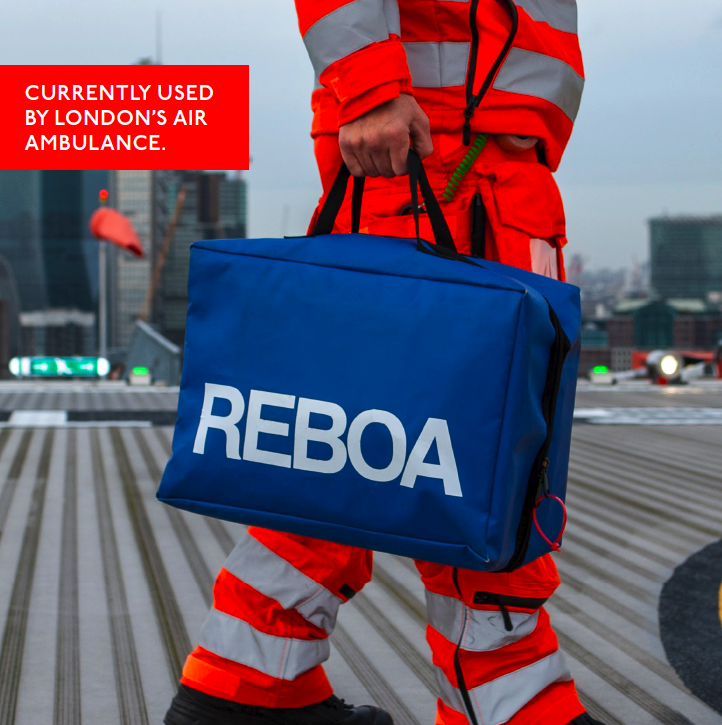
BA Student: Hal Dubuisson
This design is based on the layout of a book, intuitively guiding the user to the next piece of equipment. This concept aims to reduce stress and saves crucial time when performing the REBOA procedure.
The layout of the kit simplifies the performance of REBOA by presenting equipment in a logical order and integrating instructions into the design. With secure equipment storage, durability, and a reduction in on-site waste, the kits can be used in all types of environments.
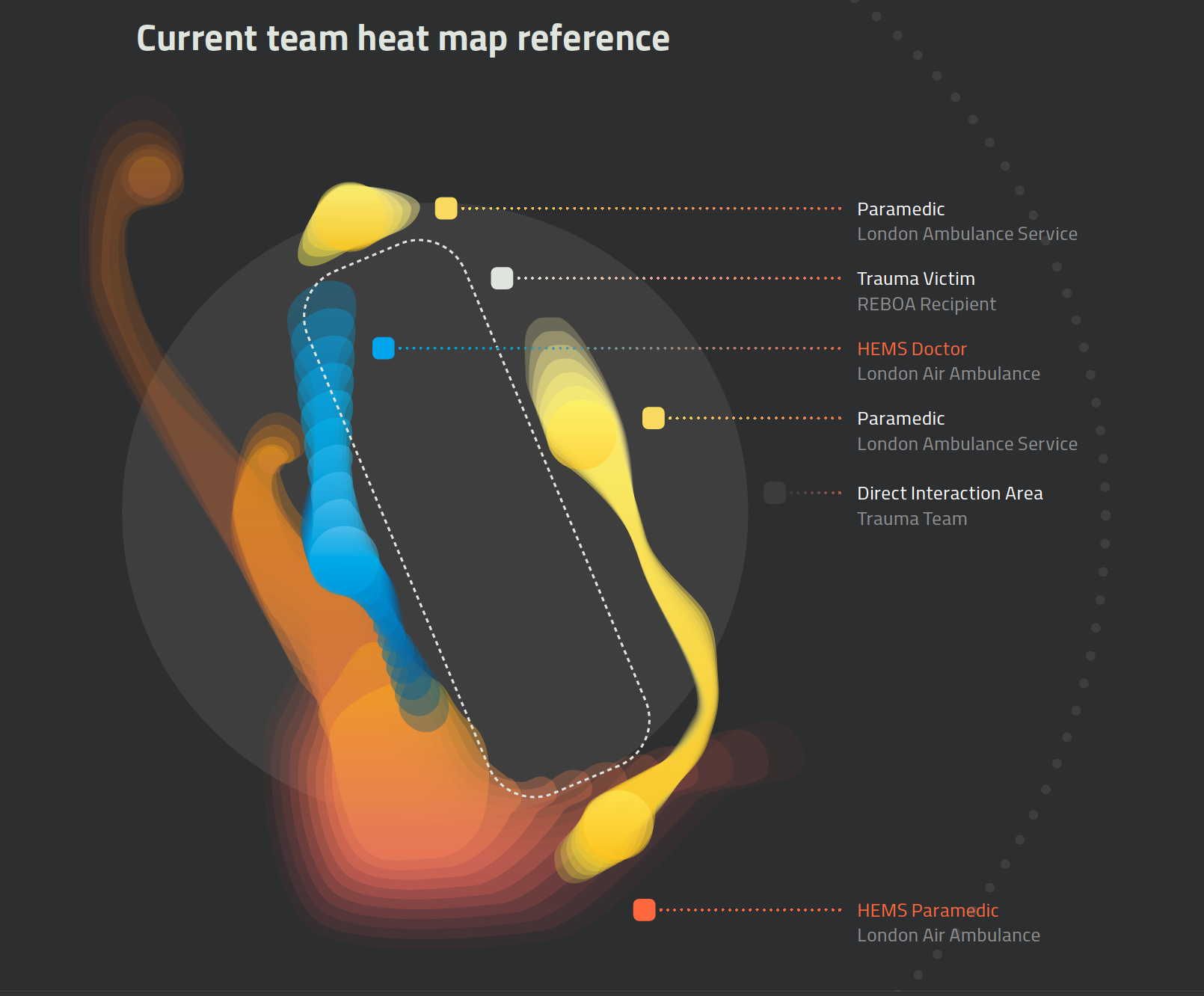
MFA student: Chris Zobl
Designing for Prehospital Care Training
This project explored how prehospital care training can be altered to improve mental proficiency for emergency medical professionals. The London Air Ambulance performs a complex life-saving procedure known as REBOA (Resuscitative Endovascular Balloon Occlusion of the Aorta) on the roadside; the only emergency medical service to do so worldwide. Teams consisting of a doctor-paramedic pairing are required to perform at their peak in extreme environments, making training for such circumstances crucial. As a result, this project strategically maps current mental processes into a framework, identifying multiple design opportunities to approach chaotic accident scenes. The framework acts as the basis for defining a curriculum, which, using Instructional Design principles, develops into a learning programme that highlights how learners experience training activities to modify communication habits and on-scene behaviour.
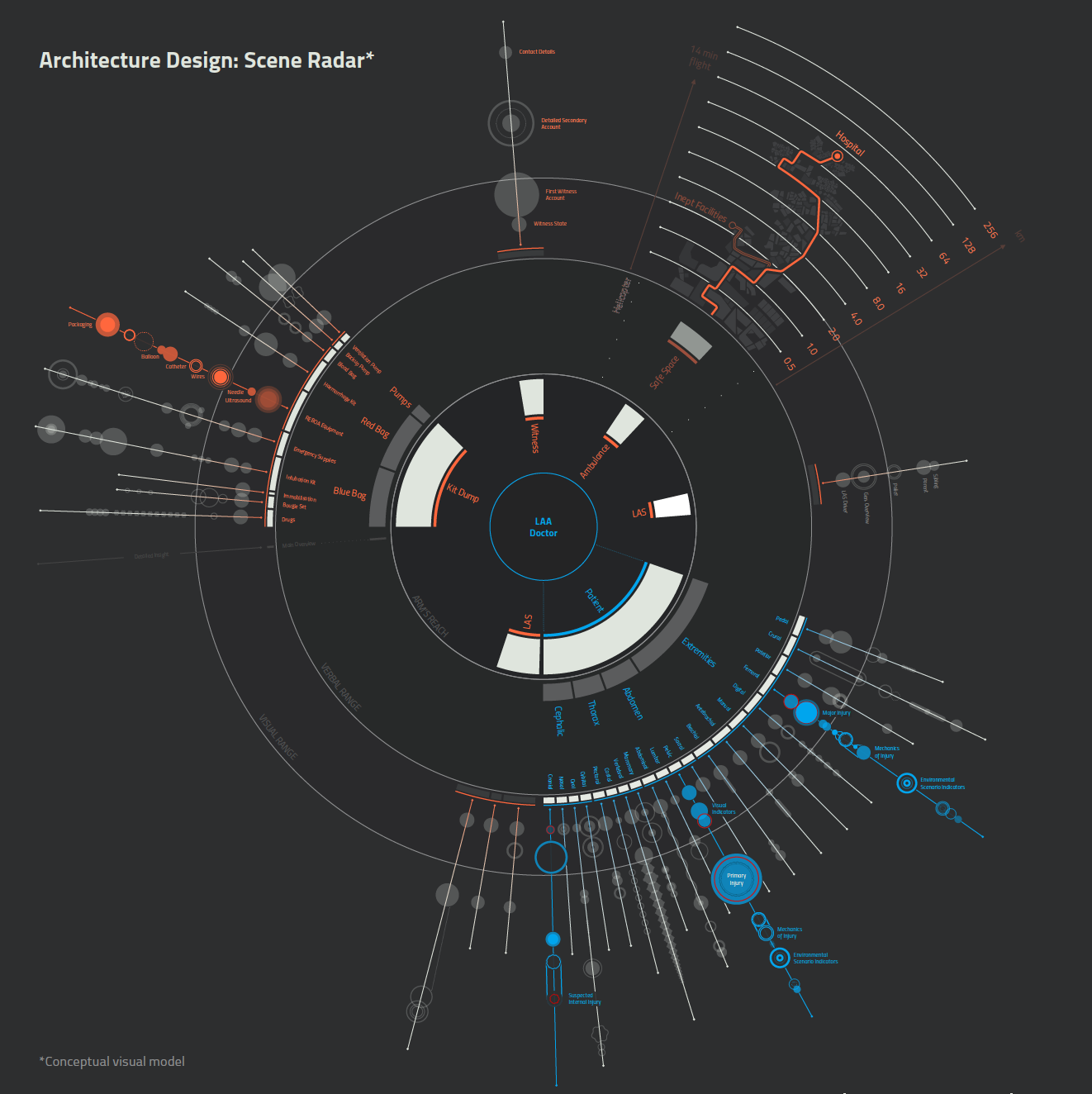
BA student: Ruby Edwards
Development of an alternative REBOA training simulation tool. It aims to match the medical performance of existing solutions whilst being more robust, as well as faster, cheaper and more intuitive to set up. A specific focus on developing realistic skin that can be ‘home-made’ and re-used many times.
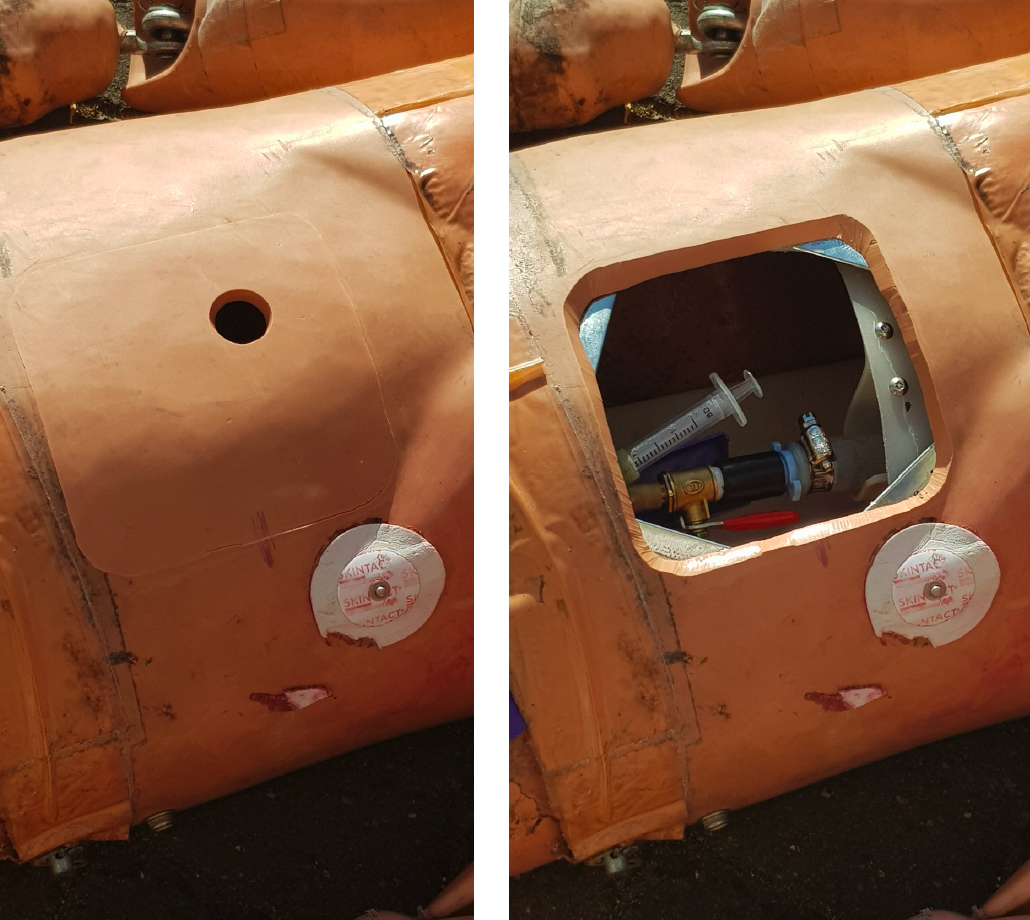
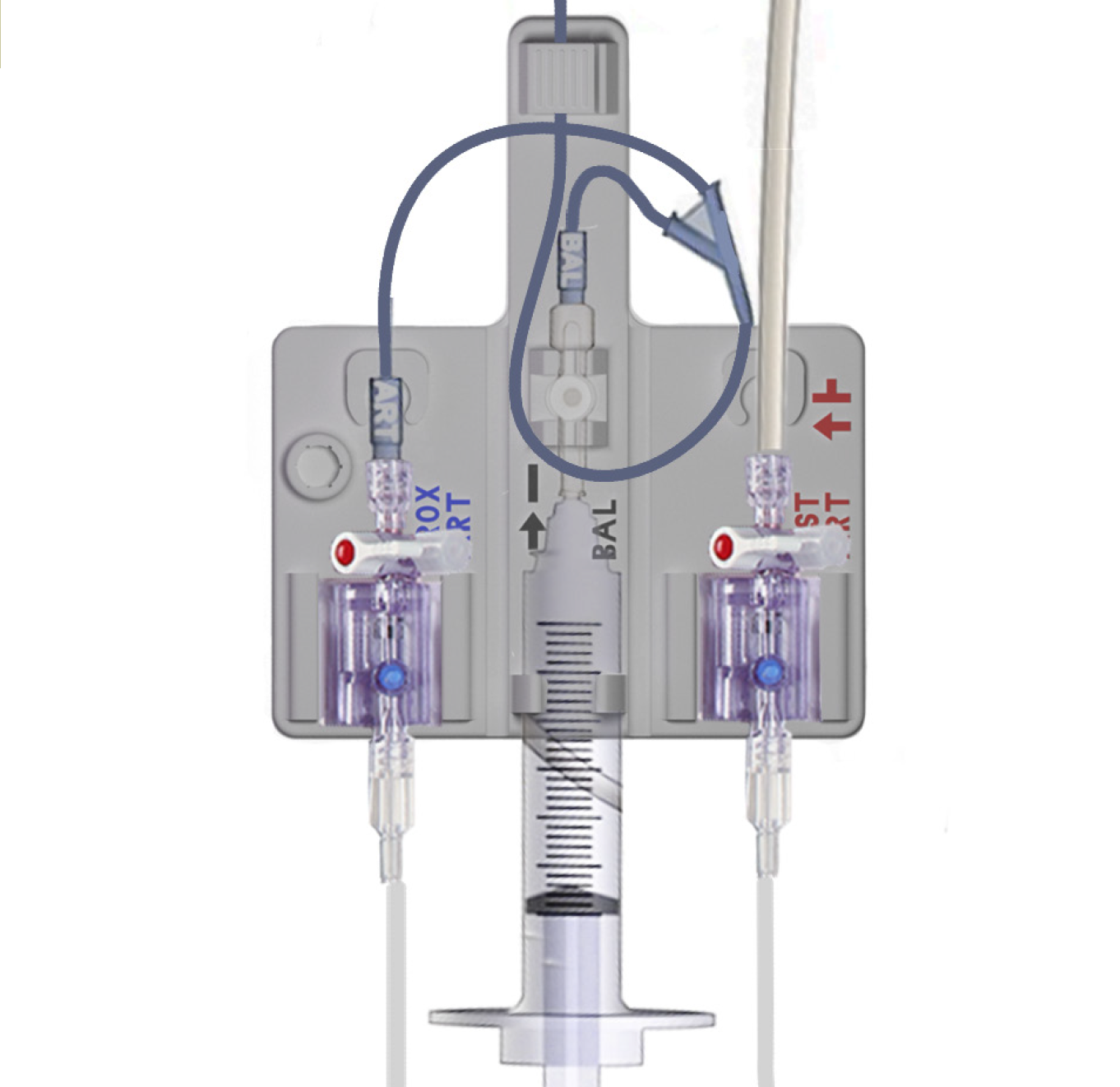
BA Student: Toby Webber
The CAP or Compact All-condition Pre-hospital device is a medical s olution allowing existing REBOA equipment to be used in pre-hospital procedures. It replaces current practises of adapting the kit for outdoor use, resulting in a procedure that is safe and easier to perform.
The design is a small appliance that attaches to the thigh of the patient with a Velcro strap. The two pressure transducers, Distal and Proximal are slotted onto the appliance to be secured on the body. The BAL stop cock and syringe are also clipped to the product to keep equipment organised. Once the catheter is inserted into the body, it can be held in place with the catheter clip preventing migration in transit to the operating theatre.
Chronoguard
Yasmine Kahlil, Sjoerd Simmerman, PinChun Lin, Farzaneh Salehi. Students from Master Digital Design Programme at Amsterdam University of Applied Sciences
We designed a remote patient-monitoring screen for the London Air Ambulance and Royal Mary Hospital trauma bay team.
The London Air Ambulance (NHS) needed a tool to be able to facilitate communication between the helicopter paramedics team and the trauma bay team to save severely ill patients by monitoring them remotely en-route to the hospital.
